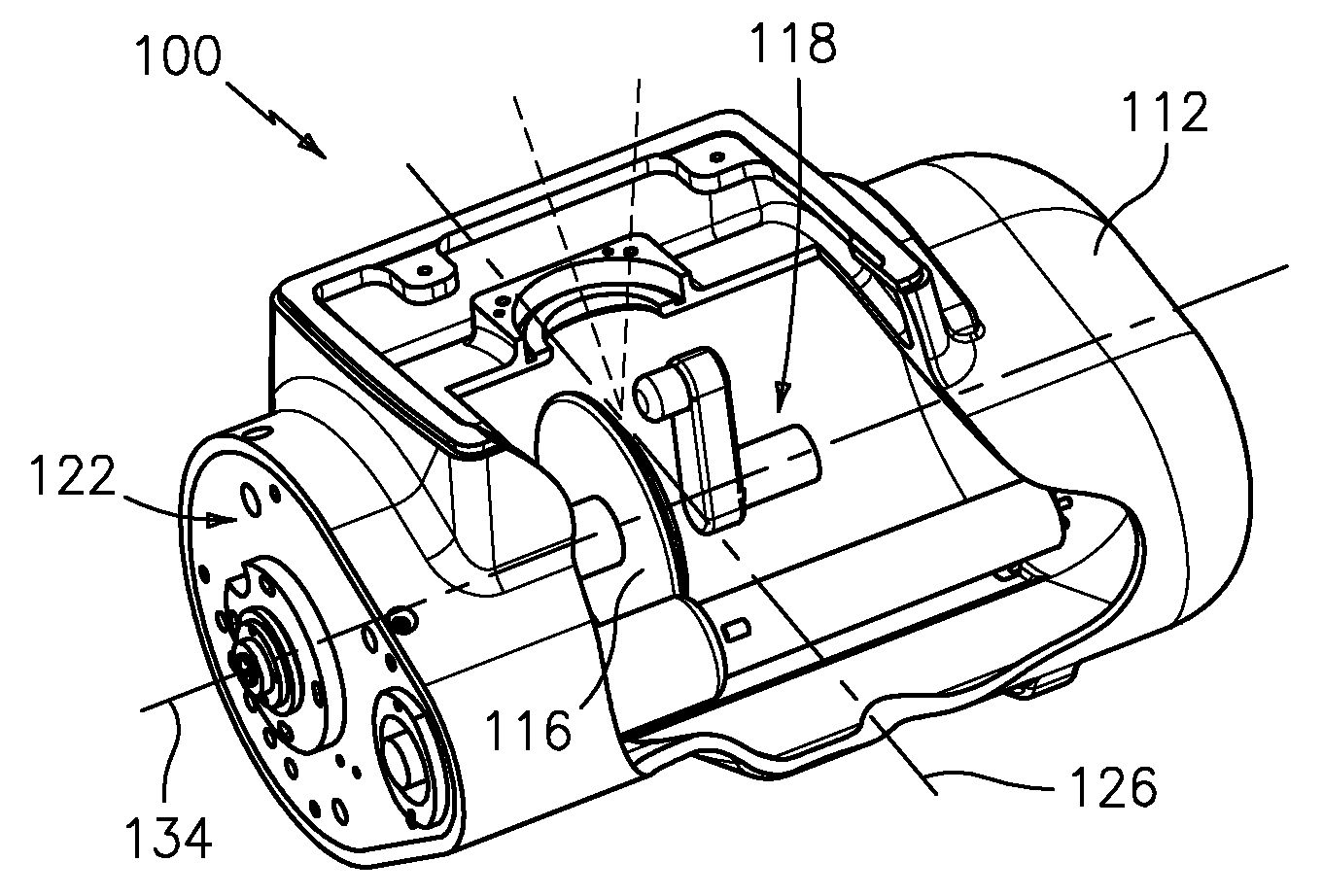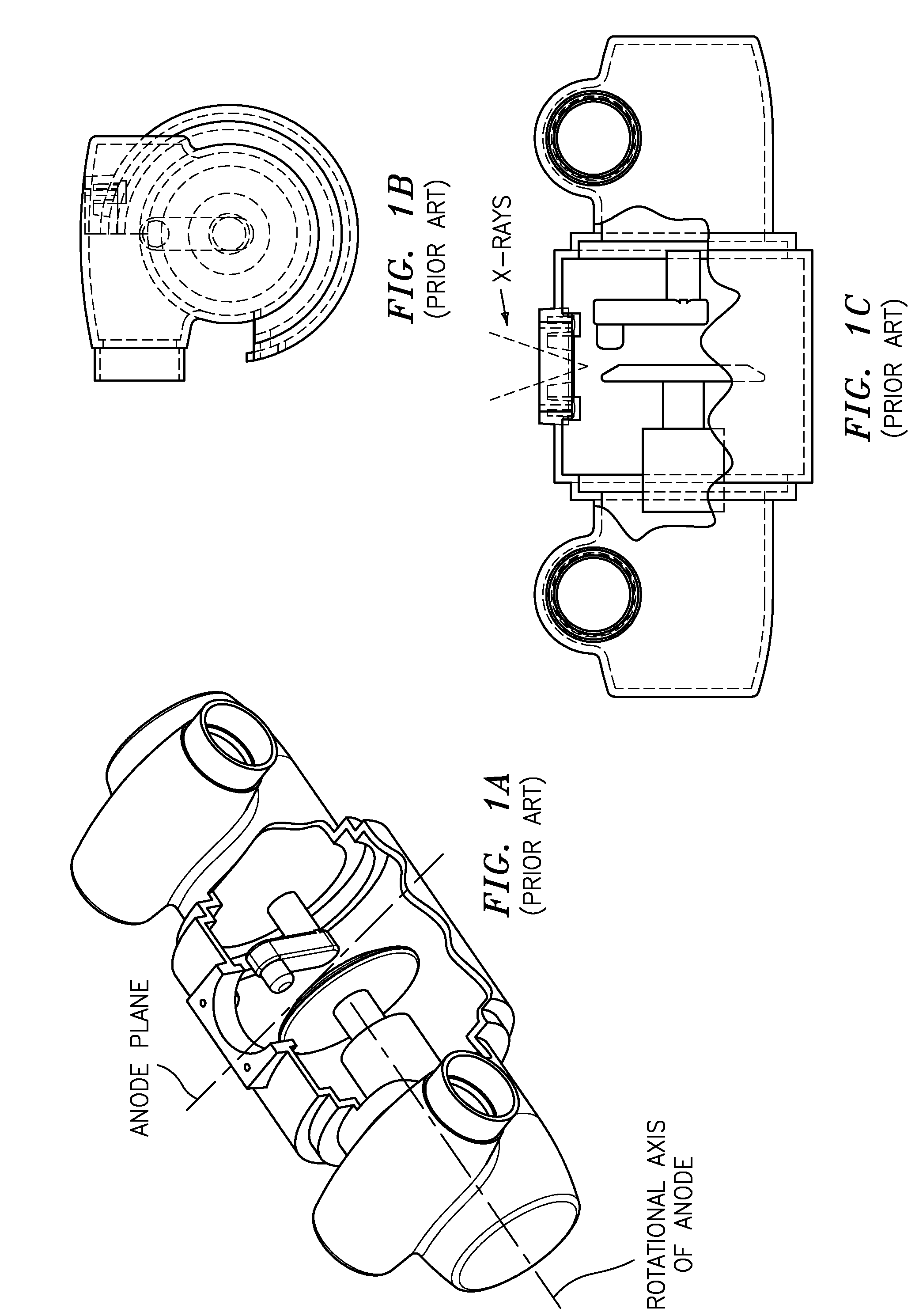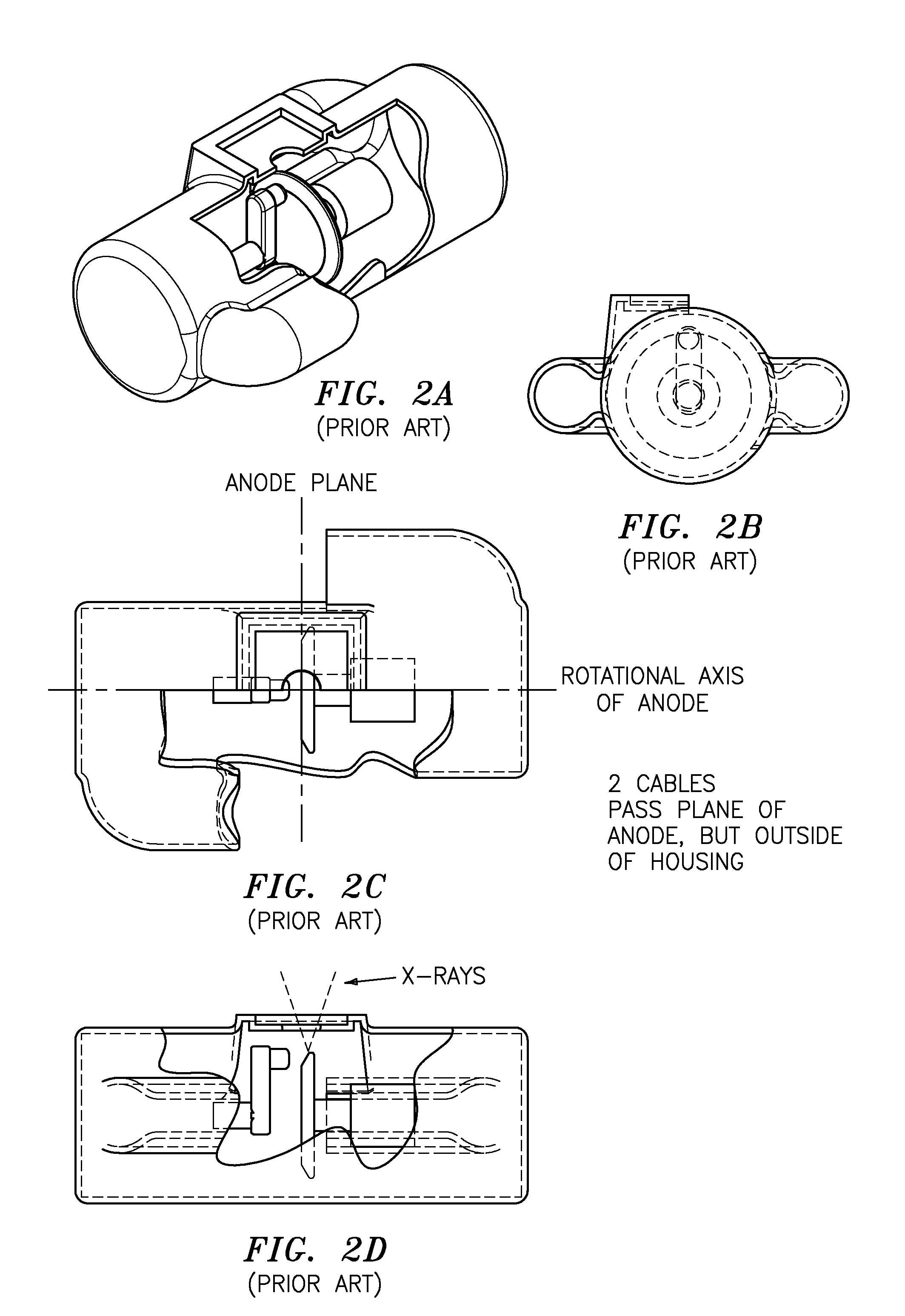Grounded rotating anode x-ray tube housing
a rotating anode and x-ray tube technology, applied in the field of medical x-ray tubes, can solve the problems of poor reliability and small assembly size, and achieve the effect of simplifying the tube design a great deal
- Summary
- Abstract
- Description
- Claims
- Application Information
AI Technical Summary
Benefits of technology
Problems solved by technology
Method used
Image
Examples
Embodiment Construction
[0036]Referring to FIGS. 4A, 4B, 4C, 4D and 4E, Applicant's preferred embodiment 100 of a “GROUNDED ROTATING ANODE X-RAY TUBE HOUSING” is shown in detail. Applicant's preferred embodiment is an arrangement of a purchased pre-designed rotating anode x-ray tube but having a unique mechanical arrangement for a high voltage (“HV”) cable in a lead-lined housing of specific design / features.
[0037]Applicant's preferred tube 100 is a bipolar tube, as all tubes are, with a single-end terminal connection which includes a metal shell or housing 112, preferably aluminum, lined with lead. Housing 112 contains a rotating anode x-ray tube 114 insert (i.e., Model G-1092 manufactured by Varian Medical Systems, Inc.) with a rotating anode disk 116 and an adjacent cathode 118; and, an extended Federal Standard receptacle 120 (rated up to 160 kV), such as the type manufactured by Claymount Assemblies B.V. Both the anode insert 114 and receptacle 120 are mounted on an anode end 122 of the housing. The an...
PUM
 Login to View More
Login to View More Abstract
Description
Claims
Application Information
 Login to View More
Login to View More - R&D
- Intellectual Property
- Life Sciences
- Materials
- Tech Scout
- Unparalleled Data Quality
- Higher Quality Content
- 60% Fewer Hallucinations
Browse by: Latest US Patents, China's latest patents, Technical Efficacy Thesaurus, Application Domain, Technology Topic, Popular Technical Reports.
© 2025 PatSnap. All rights reserved.Legal|Privacy policy|Modern Slavery Act Transparency Statement|Sitemap|About US| Contact US: help@patsnap.com



